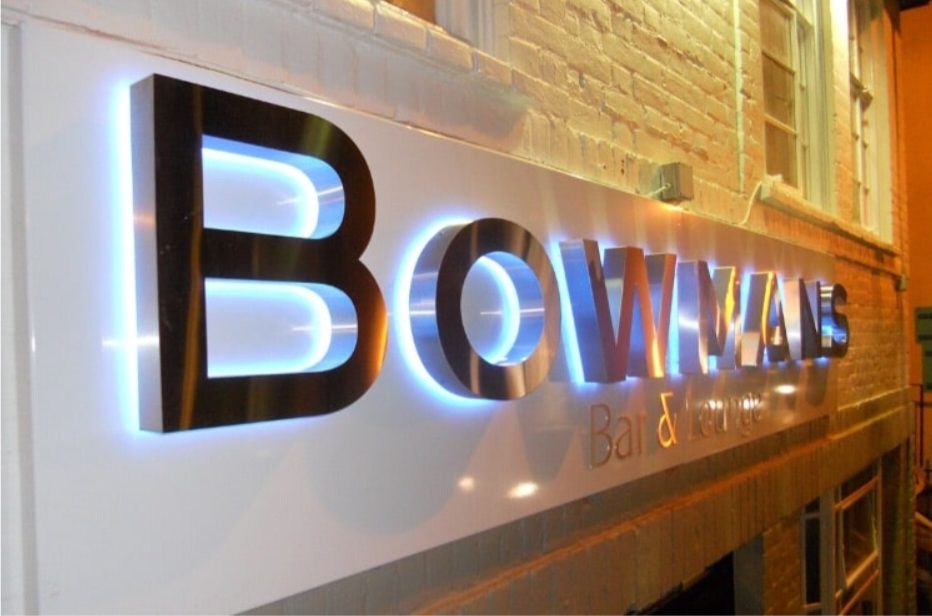
Compliance requirements and compelling business data drive urgent workplace transformation across Australia
August 1, 2025 — A convergence of regulatory changes and research findings has Australian business leaders accelerating their workplace culture overhauls.
Studies confirm organisations with poor psychosocial safety climate are bleeding an estimated $6 billion annually through reduced productivity¹, while positive duty requirements now make inclusion a legal necessity rather than an option⁵.
The acceleration stems from converging forces that have transformed DE&I (diversity, equity and inclusion) from a “nice-to-have” initiative into business-critical infrastructure.
Safe Work Australia’s research quantifies the significant cost of neglecting psychosocial safety climate¹, while legislative changes implemented in 2023 give regulators enhanced enforcement powers over workplace inclusion practices⁵.
Key Takeaways
- Australian employers face $6 billion in annual productivity losses from poor psychological safety practices¹.
- Positive duty regulations implemented in 2023 grant AHRC enforcement powers with potential legal consequences for non-compliance⁵.
- Companies with high psychological safety see 76% higher engagement and 27% lower turnover rates⁷.
- 89% of employees say psychological safety is essential⁴, and firms report 230% return on investment for every dollar spent on DE&I initiatives⁷.
- Forward-thinking organisations report 230% return on investment for every dollar spent on DE&I initiatives⁷.
- Research confirms psychological safety functions as an “equaliser” for diverse employee groups².
The $6 Billion Wake-Up Call
Safe Work Australia’s research has confirmed significant financial impact to corporate boardrooms across the nation.
The total cost of low psychosocial safety at work to Australian employers sits at approximately $6 billion per annum¹, driven primarily by increased absenteeism, presenteeism, and staff turnover.
According to McKinsey research, 89% of employee respondents said they believe that psychological safety at work is essential⁴.
This isn’t about being politically correct – it’s about measurable business impact that directly affects profitability, innovation capacity, and competitive advantage.
The research confirms that depression alone costs Australian employers $6.3 billion annually through reduced productivity and workplace absences¹.
These figures represent a fundamental shift in how business leaders must view workplace culture – not as a soft HR initiative, but as a financial imperative.
Companies that previously viewed diversity and inclusion consultants as optional advisors are now seeking urgent partnerships to avoid the mounting costs of inaction.
Australian organisations across manufacturing, healthcare, and professional services are discovering that psychological safety scores correlate directly with operational performance metrics.
Regulatory Pressure Intensifies
The business case for action has been reinforced by regulatory changes that came into effect in December 2023⁵.
The positive duty provisions under the Sex Discrimination Act now require employers to take proactive steps to prevent discrimination and harassment8, moving beyond reactive complaint handling to preventive action.
The Australian Human Rights Commission gained new regulatory powers, including the authority to inquire into compliance and issue penalties for organisations failing to meet their positive duty obligations⁵. This represents the most significant shift in Australian workplace law since the introduction of equal employment legislation.
Industry experts note that the positive duty isn’t just about avoiding legal action – it’s about demonstrating systematic, proactive approaches to creating inclusive workplaces.
The seven compliance standards are quite specific, and organisations need evidence of genuine implementation.8
The seven standards include leadership commitment, cultural change initiatives, knowledge and training programs, risk management systems, support mechanisms, reporting processes, and monitoring frameworks.
Companies are discovering that superficial training programs and policy documents no longer meet regulatory expectations.
The Performance Connection
Established research has demonstrated that psychological safety enables rather than compromises workplace standards.
Boston Consulting Group’s comprehensive study of 28,000 employees across 16 countries, including Australia, confirmed that psychological safety actually enables higher performance through constructive challenge and innovation².
The data reveals particularly striking results for diverse employee groups. When leaders successfully create psychological safety, retention increases by more than four times for women and employees who identify as Black, Indigenous, or people of colour².
For people with disabilities, retention increases by five times, while LGBTQ+ employees show six times higher retention rates².
“Psychological safety functions as an equaliser,” explains Steven Asnicar, CEO of Diversity Australia. “It enables diverse and disadvantaged employee groups to achieve the same levels of workplace satisfaction as their more advantaged colleagues. This isn’t about special treatment – it’s about removing barriers to performance so all employees can contribute their best work.”
Australian organisations are beginning to recognise this connection between inclusion and business outcomes.
Great Place to Work Australia’s 2024 analysis shows companies with high psychological safety levels consistently outperform competitors in productivity, creativity, and employee retention³.
The Innovation Imperative
Google’s Project Aristotle identified psychological safety as the top driver of team success⁴, and subsequent research extends this finding beyond tech companies to traditional Australian industries.
Mining, healthcare, financial services, and manufacturing companies are discovering that psychological safety directly impacts their innovation capacity.
Teams operating in psychologically safe environments are 76% more engaged and demonstrate 27% lower turnover risk⁷.
Research consistently shows that psychological safety is one of the strongest predictors of team performance, productivity, quality, safety, creativity, and innovation⁴.
These teams consistently produce more innovative solutions and adapt faster to changing market conditions⁴.
Cultural awareness training programs have become increasingly relevant as Australian workplaces continue demographic diversification.9
Census data shows ongoing shifts that require evolved inclusion strategies, with 27.6% of Australians now born overseas and significant increases in cultural and linguistic diversity⁹.
Companies that fail to adapt risk losing access to diverse talent pools and struggling with intercultural communication challenges.
Equal Employment Opportunity Gets Strategic
Traditional equal employment opportunity approaches focused primarily on compliance and risk mitigation.
The new business environment demands strategic integration of diversity and inclusion principles throughout organisational operations.
Leading Australian companies are moving beyond basic EEO policies to implement comprehensive inclusion strategies that address unconscious bias, cultural competence, and psychological safety simultaneously.
This shift reflects growing recognition that diverse teams outperform homogeneous groups when supported by inclusive environments.
“We’re seeing a fundamental transformation in how business leaders think about workplace diversity,” observes Steven Asnicar, CEO of Diversity Australia. “It’s no longer sufficient to hire diverse talent – organisations must create conditions where all employees can contribute their best work.”
The strategic approach involves systematic changes to recruitment, performance management, leadership development, and organisational culture.
Companies implementing these comprehensive strategies report significant improvements in employee engagement, customer satisfaction, and financial performance.10
Regional Implementation Challenges
While major capital cities have ready access to diversity and inclusion consultants and training programs, regional Australian businesses face unique implementation challenges.
Distance from specialist providers, smaller team sizes, and limited training budgets require adapted approaches to workplace inclusion.
Regional organisations are discovering creative solutions through virtual training delivery, industry associations, and collaborative approaches with neighbouring businesses.
The mining sector, with its significant regional presence, has developed industry-specific psychological safety programs that address both cultural diversity and workplace safety requirements.
Rural healthcare providers are finding that psychological safety initiatives improve both staff retention and patient care outcomes.
The connection between inclusive workplace cultures and service quality has particular relevance for organisations serving diverse community populations.
Measurement and Return on Investment
Business leaders increasingly demand concrete evidence of DE&I program effectiveness.
Australian organisations are implementing sophisticated measurement frameworks that track both leading indicators (training participation, policy awareness) and lagging indicators (retention rates, productivity metrics, customer satisfaction).
The most successful programs demonstrate clear return on investment through reduced recruitment costs, improved productivity, and enhanced innovation capacity.11
Companies report average returns of 230% for every dollar invested in comprehensive psychological safety initiatives⁷.
Workplace research indicates that the measurement challenge isn’t technical – it’s about connecting workplace culture metrics to business outcomes.11
Organisations that successfully establish these connections gain significant competitive advantages.11
Progressive companies are sharing anonymised benchmarking data to accelerate industry-wide improvement.
This collaborative approach helps smaller organisations access sophisticated measurement tools and proven implementation strategies.
Future Compliance Landscape
Regulatory experts anticipate continued evolution in Australian workplace inclusion requirements.
The success of positive duty provisions may lead to expanded coverage across additional protected attributes and industry sectors⁶.
International developments also influence Australian regulatory trends⁶. The European Union’s corporate sustainability reporting requirements include workforce diversity metrics12, while similar frameworks are under consideration in Australia.
Current compliance requirements should be viewed as a foundation rather than a ceiling for workplace inclusion efforts. The regulatory trajectory clearly points toward expanded inclusion obligations and increased enforcement activity.
Proactive companies are implementing frameworks that exceed current minimum requirements, positioning themselves advantageously for future regulatory changes while capturing immediate business benefits.
The Competitive Advantage
Australian businesses operating in global markets face increasing pressure to demonstrate strong inclusion credentials.
International clients, investors, and partners increasingly evaluate workplace culture as part of vendor selection and investment decisions.
Companies with mature DE&I practices report advantages in international business development, talent acquisition, and investor relations.13
The reputational benefits extend beyond compliance risk mitigation to genuine competitive differentiation.
Business research shows that inclusion has become a business capability rather than just a HR function.
Organisations that recognise this shift early position themselves to lead their industries through the transformation period.
The transformation requires systematic investment in leadership development, cultural change initiatives, and measurement capabilities.
Companies taking action now position themselves to capture the full business benefits while meeting evolving regulatory expectations.
Australian organisations can no longer treat diversity, equity and inclusion as optional initiatives. The convergence of regulatory requirements, financial imperatives, and competitive pressures demands immediate, systematic action.
Companies that respond strategically will thrive in the new business environment, while those that delay face mounting costs and diminishing opportunities.
For organisations seeking expert guidance on implementing comprehensive DE&I strategies that deliver measurable business outcomes, Diversity Australia offers specialised consulting and training services tailored to Australian workplace requirements and regulatory compliance. Call 07 3118 6166.
Sources:
- Safe Work Australia. (2024). “Psychosocial safety climate and better productivity in Australian workplaces: Costs, productivity, presenteeism, absenteeism.” Retrieved from https://www.safeworkaustralia.gov.au/resources-and-publications/reports/psychosocial-safety-climate-and-better-productivity-australian-workplaces-costs-productivity-presenteeism-absenteeism
- Boston Consulting Group. (2025). “Psychological Safety Levels the Playing Field for Employees.” Retrieved from https://www.bcg.com/publications/2024/psychological-safety-levels-playing-field-for-employees
- Great Place to Work Australia. (2024). “Psychological Safety in Australian Workplaces.” Retrieved from https://greatplacetowork.com.au/employee-experience/psychological-safety-in-australian-workplaces/
- McKinsey & Company. (2023). “What is psychological safety?” Retrieved from https://www.mckinsey.com/featured-insights/mckinsey-explainers/what-is-psychological-safety
- Australian Human Rights Commission. (2023). “Positive duty rules change from today.” Retrieved from https://thesector.com.au/2023/12/12/positive-duty-rules-for-employers-including-ecec-start-from-today/
- Pinsent Masons. (2025). “Asia-Pacific employers must consider diversity, equality and inclusion requirements.” Retrieved from https://www.pinsentmasons.com/out-law/analysis/asia-pacific-employers-consider-diversity-equality-inclusion-requirements
- Niagara Institute. (2023). “30+ Psychological Safety at Work Stats [2025].” Retrieved from https://www.niagarainstitute.com/blog/psychological-safety-at-work
- Australian Human Rights Commission. (2023). “Guidelines for Complying with the Positive Duty under the Sex Discrimination Act 1984 (Cth).” Retrieved from https://humanrights.gov.au/our-work/sex-discrimination/positive-duty-sex-discrimination-act
- Australian Bureau of Statistics. (2022). “Cultural diversity: Census, 2021.” Retrieved from https://www.abs.gov.au/statistics/people/people-and-communities/cultural-diversity-census/latest-release
- McKinsey & Company. (2023). “Diversity matters even more: The case for holistic impact.” Retrieved from https://www.mckinsey.com/featured-insights/diversity-and-inclusion/diversity-matters-even-more-the-case-for-holistic-impact
- Diversio. (2024). “Measuring DEI ROI (2024 Guide).” Retrieved from https://diversio.com/measure-dei-roi/
- EDGE Certified Foundation. (2024). “How Will EU CSRD Change DE&I Management and Reporting?” Retrieved from https://www.edge-cert.org/article/eu-csrd-changes-dei-management-and-reporting/
- McKinsey & Company. (2018). “Delivering growth through diversity in the workplace.” Retrieved from https://www.mckinsey.com/capabilities/people-and-organizational-performance/our-insights/delivering-through-diversity







